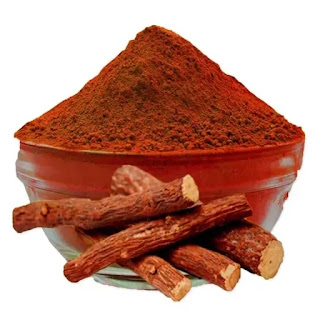Achieving Radiant Skin: A Comprehensive Guide to DIY Face Packs for Skin Brightening
The pursuit of radiant, even-toned skin is a common goal for many. While numerous commercial products promise skin brightening effects, the growing interest in natural and DIY solutions has led to a resurgence in homemade face packs. This article explores the efficacy of various DIY face packs for skin brightening, comparing before-and-after results, potential benefits, and important considerations for safe and effective usage.
Understanding Skin Brightening and its Mechanisms
Skin brightening, also known as skin lightening or illumination, aims to reduce the appearance of hyperpigmentation â€" areas of darker skin tone caused by an overproduction of melanin. Melanin is the pigment responsible for skin color, and its uneven distribution can lead to blemishes, age spots, sunspots, and melasma. While some degree of hyperpigmentation is a natural part of aging, excessive pigmentation can significantly affect one's confidence and self-esteem.
Factors Contributing to Hyperpigmentation
Several factors can trigger hyperpigmentation, including:
- Sun exposure: Ultraviolet (UV) radiation from the sun is a primary culprit, stimulating melanin production.
- Hormonal changes: Pregnancy (melasma), hormonal imbalances, and certain medications can influence melanin production.
- Inflammation: Acne, wounds, and other skin irritations can lead to post-inflammatory hyperpigmentation.
- Genetics: Predisposition to hyperpigmentation can be inherited.
- Age: Age spots (solar lentigines) are a common form of hyperpigmentation associated with aging.
Mechanisms of Action of DIY Skin Brightening Packs
DIY face packs work through various mechanisms to improve skin tone and reduce hyperpigmentation. These include:
- Exfoliation: Many ingredients in these packs, such as yogurt, lemon juice, and oats, gently exfoliate the skin, removing dead skin cells and revealing brighter, more even-toned skin underneath.
- Antioxidant properties: Ingredients like turmeric, honey, and aloe vera possess potent antioxidant properties, combating free radicals that damage skin cells and contribute to hyperpigmentation.
- Anti-inflammatory effects: Certain ingredients, including aloe vera and cucumber, have anti-inflammatory properties, reducing inflammation that can lead to hyperpigmentation.
- Natural bleaching agents: Some ingredients, such as lemon juice and papaya, contain natural bleaching agents that can lighten dark spots, but should be used cautiously.
Popular DIY Face Packs for Skin Brightening: Before and After Results
Numerous DIY face packs are touted for their skin brightening properties. The effectiveness varies depending on individual skin type, consistency of application, and the specific ingredients used. It's crucial to perform a patch test before applying any new ingredient to the entire face to check for allergic reactions.
Turmeric and Yogurt Face Pack
Before: Skin with noticeable dark spots, uneven tone, and potentially dull appearance.
After (with consistent use): A reduction in the appearance of dark spots, a more even skin tone, and an overall brighter complexion. Turmeric's curcumin possesses anti-inflammatory and antioxidant properties, while yogurt's lactic acid gently exfoliates.
Gram Flour (Besan) and Rosewater Face Pack
Before: Skin with dullness, minor blemishes, and uneven texture.
After (with regular application): Improved skin texture, reduced appearance of blemishes, and a subtle brightening effect. Gram flour acts as a natural exfoliant, while rosewater soothes and hydrates the skin.
Aloe Vera and Honey Face Pack
Before: Skin prone to irritation, redness, or sun damage.
After (with consistent use): Reduced redness, improved hydration, and a healthier-looking complexion. Aloe vera's soothing and anti-inflammatory properties calm irritated skin, while honey's antioxidants protect against damage.
Papaya and Lemon Face Pack (Use with Caution)
Before: Skin with moderate hyperpigmentation.
After (with careful, infrequent application): Potential for lightening of dark spots, but requires careful monitoring due to the sensitivity of lemon juice. Papaya's enzymes gently exfoliate, while lemon's citric acid has bleaching properties, but can also be irritating.
Important Considerations and Safety Precautions
While DIY face packs offer a natural approach to skin brightening, it is essential to prioritize safety and follow these precautions:
- Patch test: Always perform a patch test on a small area of skin before applying any new face pack to your entire face.
- Sun protection: Many skin brightening ingredients increase sun sensitivity. Always apply a broad-spectrum sunscreen with an SPF of 30 or higher during the day, even on cloudy days.
- Consistency: Results with DIY face packs are gradual and require consistent application over several weeks or even months.
- Ingredient quality: Use fresh, high-quality ingredients whenever possible.
- Avoid over-exfoliation: Over-exfoliating can irritate the skin and worsen hyperpigmentation. Start with infrequent applications and gradually increase frequency as tolerated.
- Consult a dermatologist: If you have severe hyperpigmentation, persistent skin issues, or are unsure about which ingredients are suitable for your skin type, consult a dermatologist.
- Limit sun exposure: Minimize direct sun exposure, especially during peak hours (10 am to 4 pm), to prevent further hyperpigmentation.
- Avoid harsh ingredients: Some ingredients, like lemon juice, can be overly harsh and irritating for sensitive skin. Use them cautiously and dilute them if necessary.
In conclusion, DIY face packs can be a valuable tool in achieving brighter, more even-toned skin. However, it's crucial to select ingredients carefully, perform patch tests, use them consistently, and prioritize sun protection. Remember that individual results vary, and patience is key. For significant hyperpigmentation or persistent skin concerns, consulting a dermatologist is recommended for a personalized treatment plan.
























